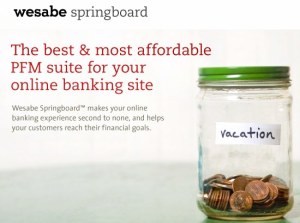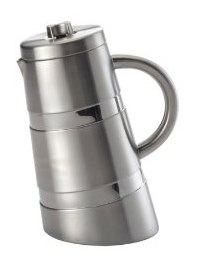Reminder: Wesabe’s Accounts tab and all related personal finance tools will be SHUT DOWN PERMANENTLY at 10:00pm Pacific TODAY.
(Wesabe Groups will remain online indefinitely, although there will be up to a few hours of downtime for Groups as we decommission other systems.)
You can download all of your Wesabe data from the snapshot page, until 10:00pm Pacific tonight. After that, all customer data and all stored credentials will be destroyed.
We have open-sourced many parts of the Wesabe system (under the Apache 2.0 License), now available on GitHub. Start here if you want to set up your own copy of Wesabe (warning: not for the faint of heart). More information about Open Wesabe is in this Groups thread. If you download a snapshot (above), Open Wesabe will import it, so you can keep using and updating your data.
Many other companies have done work to help Wesabe users transition to their services. Here are some links for those of you looking for a new service (we are not endorsing any of these, just making the information available):
- PocketSmith: “PocketSmith is a web-based calendar that forecasts your future cash position.” http://www.pocketsmith.com/blog/2010/07/10/importing-your-wesabe-data-into-pocketsmith/
- Xero Personal: “Xero is the easiest way to keep track of your personal spending habits and savings goals.” http://blog.xero.com/2010/07/welcome-wesabians/
- Jemstep: “Jemstep is a free web service dedicated to helping individual investors like you select and manage quality investments that fit your unique needs. We invite all wesabe users to sign up for our beta program.” https://www.jemstep.com/info/wesabe
- moneyStrands: “moneyStrands is here to do just that: Make life easier and maybe even a speck more fun while helping you do what you gotta do when it comes to ‘Getting your money in top shape.'”
https://money.strands.com/blog/2010/06/welcoming-wesabe-users-moneystrands - IronMoney: “Iron Money is a free personal finance web app that helps you securely keep track of your spending.” http://blog.ironmoney.com/2010/07/30/hello-wesabe-users/
Finally, one of Wesabe’s advisors, Trent Hamm, posted a note on his blog for people looking for alternatives to Wesabe. He echoes many of the values we have held for Wesabe in his recommendations:
http://www.thesimpledollar.com/2010/07/01/wesabe-shuts-down-what-are-the-alternatives/
Thanks for using Wesabe.
Marc Hedlund
CEO, Wesabe


 For our special theme day on coffee, I decided to review the Bonjour Montano French press — not because it’s new (it came out in 2007), but because it was by far the coolest looking commercially sold French press out there. I was digging the brushed stainless steel leaning-tower-of-Pisa look. It makes eight cups of coffee, which was perfect for when I had a pancake birthday party for my dog Malcolm last weekend. At $70, it’s on the high end of the French press market, but think of it as an investment into the overall coolness factor of your kitchen appliance collection.
For our special theme day on coffee, I decided to review the Bonjour Montano French press — not because it’s new (it came out in 2007), but because it was by far the coolest looking commercially sold French press out there. I was digging the brushed stainless steel leaning-tower-of-Pisa look. It makes eight cups of coffee, which was perfect for when I had a pancake birthday party for my dog Malcolm last weekend. At $70, it’s on the high end of the French press market, but think of it as an investment into the overall coolness factor of your kitchen appliance collection.